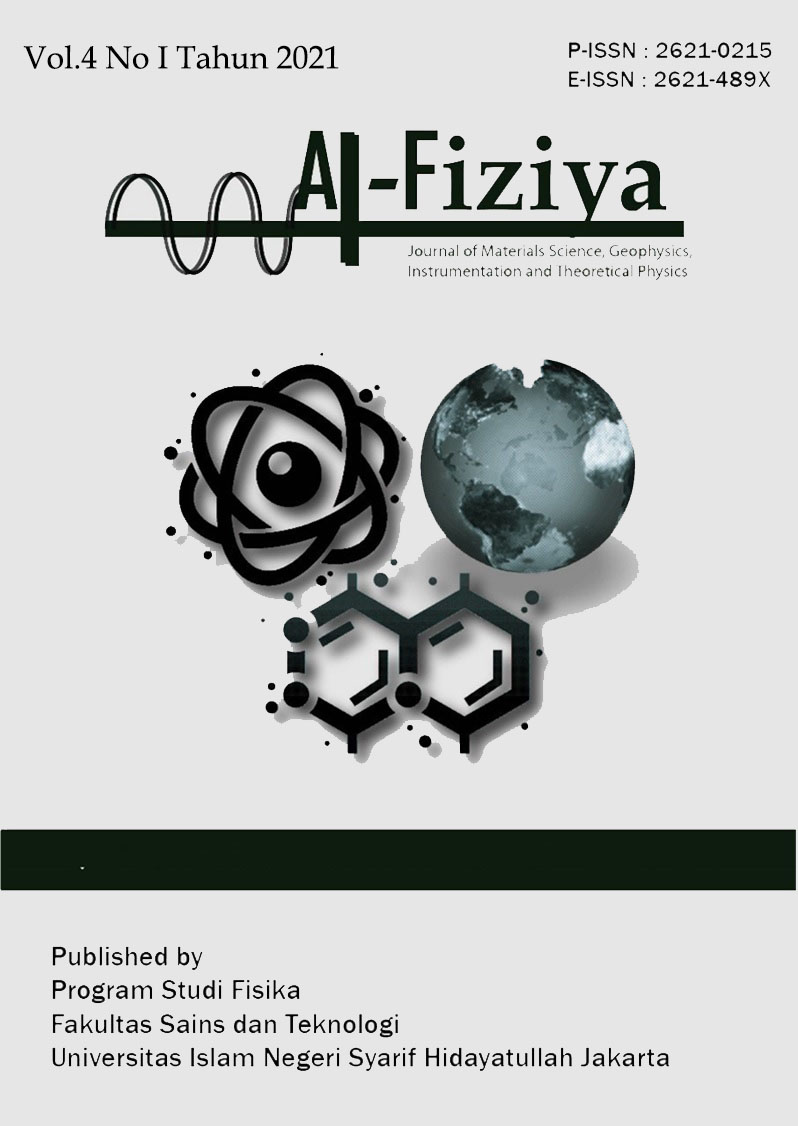Analysis of Superhydrophobic-Superoleophilic Properties on Modification of Polyurethane Sponge for Selective Oil-Water Separation
DOI:
https://doi.org/10.15408/fiziya.v4i1.19697Keywords:
superhydrophobic-superoleophilic, PU sponge, ZnO, Fe3O4 TEOS, stearic acidAbstract
In this research, a modification of polyurethane (PU) sponge material has been made to obtain superhydrophobic-superoleophilic properties. The PU sponge was coated with several nanomaterials such as ZnO, Fe3O4+TEOS, and stearic acid by dip-coating and drop-coating methods. The tests include selective separation of oil and water with a magnetic response. Several types of oil and organic solvents were tested for absorption capacity. The results showed that the PU@ZnO@Fe3O4@SA sponge has a good absorption capacity, from 4.37 mL to 7.37 mL. The fabricated PU sponge could selectively separate oil from water with a separation efficiency above 99%. The fabricated PU sponge also could be magnetically driven by external magnetic fields. From the characterization using 3D OM, the water contact angle was 153.38°, which indicates that the PU@ZnO@Fe3O4@SA sponge is superhydrophobic. And from surface morphology obtained an average pore size diameter of 167.475 μm.
References
M. Fingas, Oil Spill Science and Technology, 1st ed., vol. 53, no. 9. USA, 2013.
M. Schrope, “Oil spill: Deep wounds,” Nature, vol. 472, no. 7342, pp. 152–154, 2011
J. Ge, H. Y. Zhao, H. W. Zhu, J. Huang, L. A. Shi, and S. H. Yu, “Advanced Sorbents for Oil-Spill Cleanup: Recent Advances and Future Perspectives,” Adv. Mater., vol. 28, no. 47, pp. 10459–10490, 2016
S. Zhou et al., “One-pot synthesis of robust superhydrophobic, functionalized graphene/polyurethane sponge for effective continuous oil-water separation,” Chem. Eng. J., vol. 302, pp. 155–162, 2016
J.-P. Tolvanen, J. Sprinkle, M. Rossi, and S. Kelly, Hydrophobic surfaces: Effect of surface structure on wetting and interaction forces. 2010.
A. Carré and K. L. Mittal, Superhydrophobic Surface, vol. 65, no. 6. CRC Press, 2009.
R. L. J. Crawford and E. P. Ivanova, Superhydrophobic Surfaces. Aalborg, 2015.
I. Yılgör, E. Yılgör, and C. K. Söz, Superhydrophobic polymer surfaces : preparation, properties and applications.
A. Søbye, J. K. Jørgensen, M.-L. K. Lund, and M. O. Mikkelsen, “Superhydrophobic Surfaces: A study of the superhydrophobicity of modified silicon dioxide surfaces,” Aalborg University, 2015.
I. G. Wenten, N. F. Himma, S. Anisah, and N. Prasetya, “Membran Superhidrofobik: Pembuatan, Karakterisasi, dan Aplikasi,” no. December, pp. 2018–2019, 2015.
H. Wang et al., “A novel carbon nanotubes reinforced superhydrophobic and superoleophilic polyurethane sponge for selective oil-water separation through a chemical fabrication,” J. Mater. Chem. A, vol. 3, no. 1, pp. 266–273, 2015
G. Kwon, E. Post, and A. Tuteja, “Membranes with selective wettability for the separation of oil-water mixtures,” MRS Commun., vol. 5, no. 3, pp. 475–494, 2015
A. J. Groszek, “The role of oleophilic surface in lubrication,” 1968.
W. Lianga and Z. Guo, “Stable Superhydrophobic and Superoleophilic Soft Porous Materials for Oil/water Separation,” RSC Adv., pp. 1–6, 2013
V. T. Tran and B. Lee, “Novel fabrication of a robust superhydrophobic PU@ZnO@Fe3O4@SA sponge and its application in oil-water separations,” Sci. Rep., no. June, pp. 1–12, 2017

